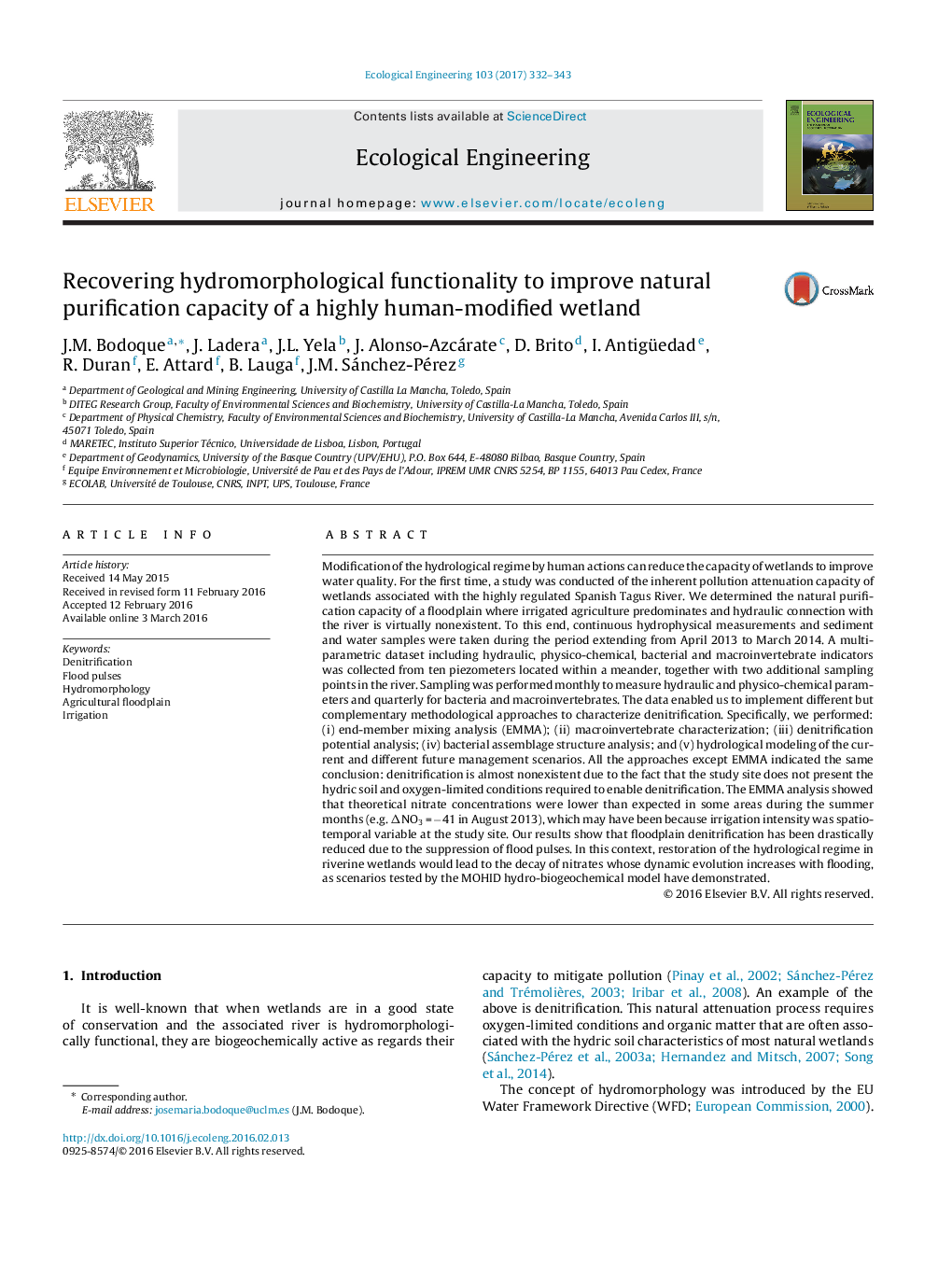| Article ID | Journal | Published Year | Pages | File Type |
|---|---|---|---|---|
| 5743889 | Ecological Engineering | 2017 | 12 Pages |
â¢Denitrification in an irrigated wetland without hydrologic connectivity is assessed.â¢Denitrification ability of a floodplain in the Spanish Tagus River is assessed for the first time.â¢River hydromorphology determines natural purification capacity of wetlands.â¢Enabling the occurrence of flood-pulses improves biogeochemical functionality.
Modification of the hydrological regime by human actions can reduce the capacity of wetlands to improve water quality. For the first time, a study was conducted of the inherent pollution attenuation capacity of wetlands associated with the highly regulated Spanish Tagus River. We determined the natural purification capacity of a floodplain where irrigated agriculture predominates and hydraulic connection with the river is virtually nonexistent. To this end, continuous hydrophysical measurements and sediment and water samples were taken during the period extending from April 2013 to March 2014. A multi-parametric dataset including hydraulic, physico-chemical, bacterial and macroinvertebrate indicators was collected from ten piezometers located within a meander, together with two additional sampling points in the river. Sampling was performed monthly to measure hydraulic and physico-chemical parameters and quarterly for bacteria and macroinvertebrates. The data enabled us to implement different but complementary methodological approaches to characterize denitrification. Specifically, we performed: (i) end-member mixing analysis (EMMA); (ii) macroinvertebrate characterization; (iii) denitrification potential analysis; (iv) bacterial assemblage structure analysis; and (v) hydrological modeling of the current and different future management scenarios. All the approaches except EMMA indicated the same conclusion: denitrification is almost nonexistent due to the fact that the study site does not present the hydric soil and oxygen-limited conditions required to enable denitrification. The EMMA analysis showed that theoretical nitrate concentrations were lower than expected in some areas during the summer months (e.g. ÎNO3Â =Â â41 in August 2013), which may have been because irrigation intensity was spatio-temporal variable at the study site. Our results show that floodplain denitrification has been drastically reduced due to the suppression of flood pulses. In this context, restoration of the hydrological regime in riverine wetlands would lead to the decay of nitrates whose dynamic evolution increases with flooding, as scenarios tested by the MOHID hydro-biogeochemical model have demonstrated.
